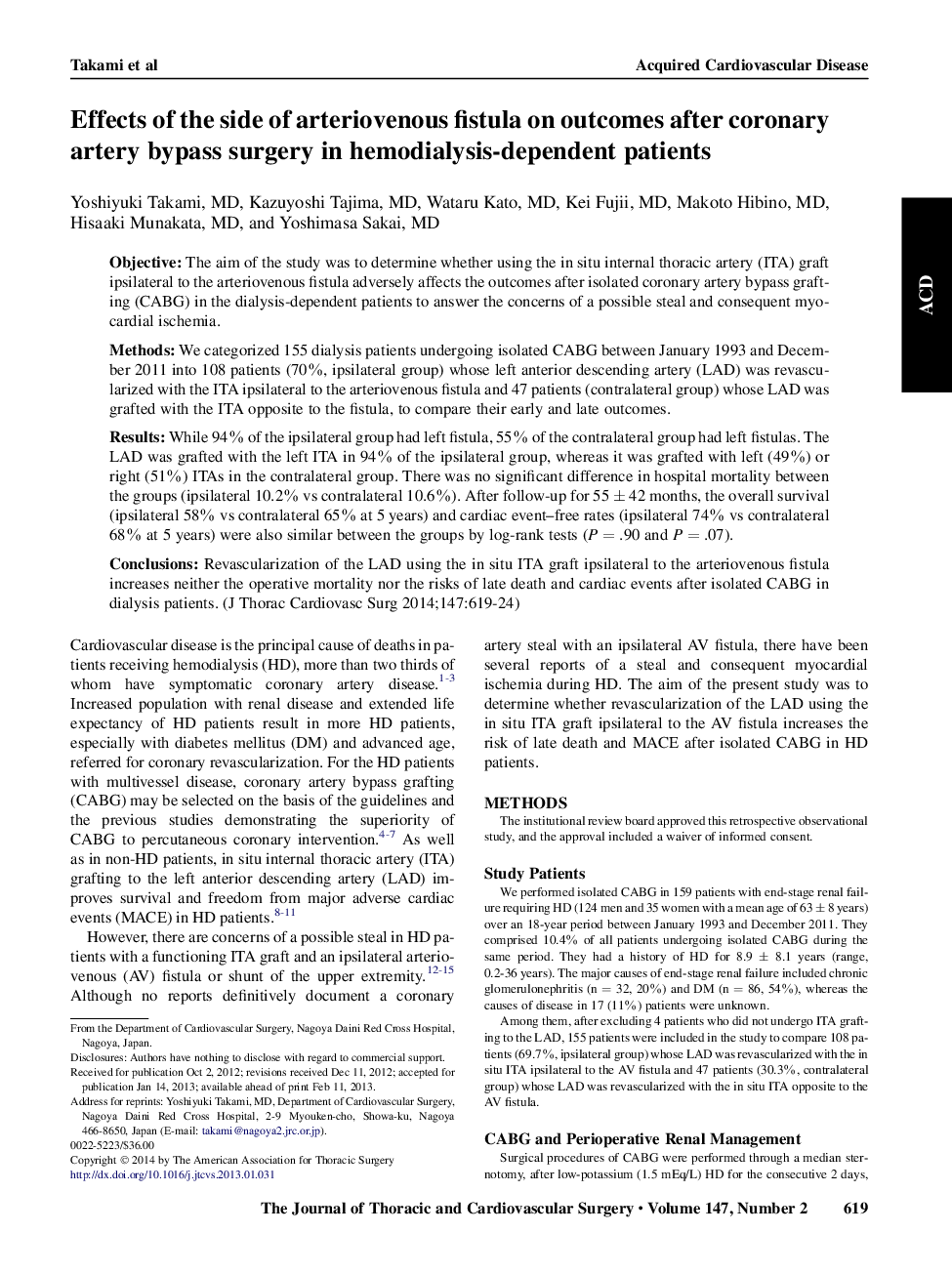| Article ID | Journal | Published Year | Pages | File Type |
|---|---|---|---|---|
| 2980209 | The Journal of Thoracic and Cardiovascular Surgery | 2014 | 6 Pages |
ObjectiveThe aim of the study was to determine whether using the in situ internal thoracic artery (ITA) graft ipsilateral to the arteriovenous fistula adversely affects the outcomes after isolated coronary artery bypass grafting (CABG) in the dialysis-dependent patients to answer the concerns of a possible steal and consequent myocardial ischemia.MethodsWe categorized 155 dialysis patients undergoing isolated CABG between January 1993 and December 2011 into 108 patients (70%, ipsilateral group) whose left anterior descending artery (LAD) was revascularized with the ITA ipsilateral to the arteriovenous fistula and 47 patients (contralateral group) whose LAD was grafted with the ITA opposite to the fistula, to compare their early and late outcomes.ResultsWhile 94% of the ipsilateral group had left fistula, 55% of the contralateral group had left fistulas. The LAD was grafted with the left ITA in 94% of the ipsilateral group, whereas it was grafted with left (49%) or right (51%) ITAs in the contralateral group. There was no significant difference in hospital mortality between the groups (ipsilateral 10.2% vs contralateral 10.6%). After follow-up for 55 ± 42 months, the overall survival (ipsilateral 58% vs contralateral 65% at 5 years) and cardiac event–free rates (ipsilateral 74% vs contralateral 68% at 5 years) were also similar between the groups by log-rank tests (P = .90 and P = .07).ConclusionsRevascularization of the LAD using the in situ ITA graft ipsilateral to the arteriovenous fistula increases neither the operative mortality nor the risks of late death and cardiac events after isolated CABG in dialysis patients.
